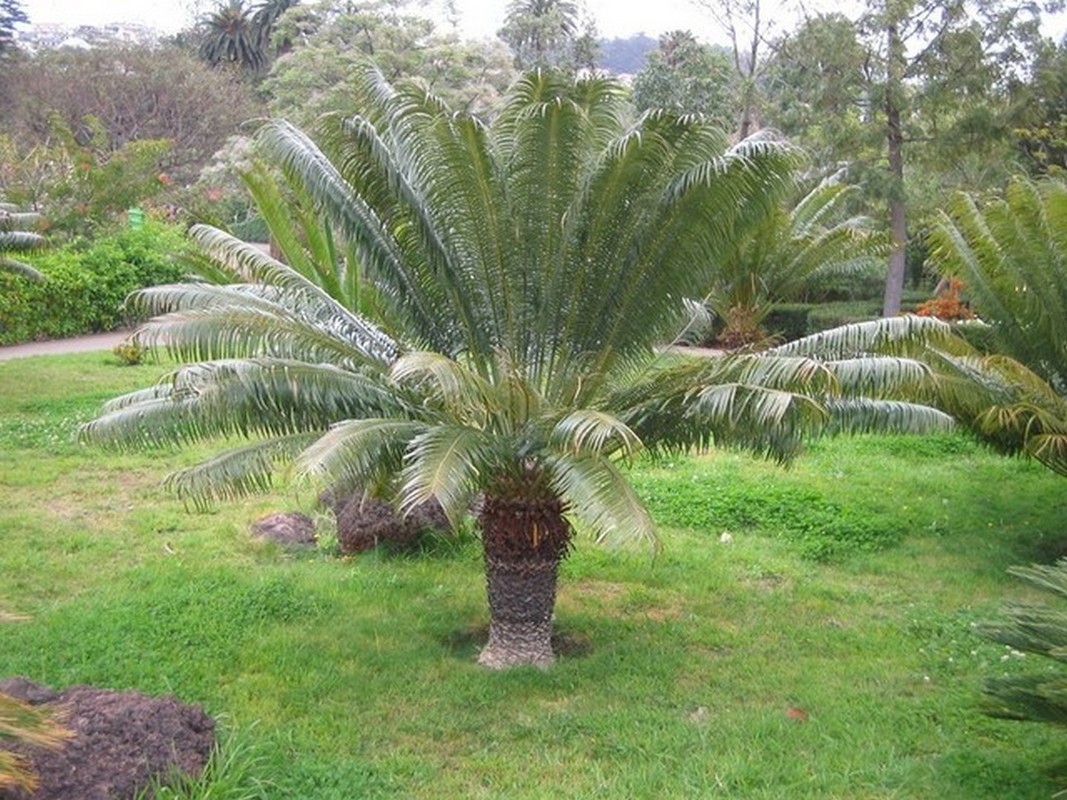23.11 Mesozoic era
Great changes took place during the transition from the Paleozoic era to the Mesozoic era. It is estimated that as many as 90 percent of the planet's species became extinct. As the climate grew drier and cooler, the abundance of plants changed in the Mesozoic era.
 Cycads are evolutionarily impotant, palm-like trees. They are gymnosperms and have cones at the end of branches. They are living fossils: they have remained the same for millions of years.
Cycads are evolutionarily impotant, palm-like trees. They are gymnosperms and have cones at the end of branches. They are living fossils: they have remained the same for millions of years.
The success of spore plants was left behind when gymnosperms, such as conifers and cycads, became the most abundant plants on the planet. Flowering plants or angiosperms also began to develop during this era.
For amphibians, the dry climate meant the deterioration of living conditions. Reptiles evolved and spread to marine and terrestrial ecosystems.
 Fossil discoveries have made the construction of complete models of dinosaurs possible. Kentrosaurus.
Fossil discoveries have made the construction of complete models of dinosaurs possible. Kentrosaurus.
The most characteristic group of reptiles that lived during the Mesozoic era are the dinosaurs. In terms of food, the dinosaurs were herbivores, scavengers, and predators.
Why did the great big animals disappear at the end of this era? One explanation is a meteorite that struck the Earth. The Sun’s rays could no longer heat the Earth’s surface the same way as they had previously, and the dinosaurs were not able to cope in the colder climate.
 The Mesozoic era saw the reign of reptiles, both on land and in water. Note that the flowering plants had not yet developed.
The Mesozoic era saw the reign of reptiles, both on land and in water. Note that the flowering plants had not yet developed.